By Mike Smith
This is one of those hypocritical moments all coaches have, or at least one which will appear hypocritical to players. On top of “wide”, the next instruction I find myself shouting to players most often is “ early”. However, sometimes the early option isn’t always the best. The diagram below shows a great time for an “ early” play. Actually, if the ball was closer to the half line I would be all for it. For some reason however, balls played in early at the top of the transition zone often lead to quick counters, especially against an opponent with strong fast forwards who readily work back into a defensive formation.
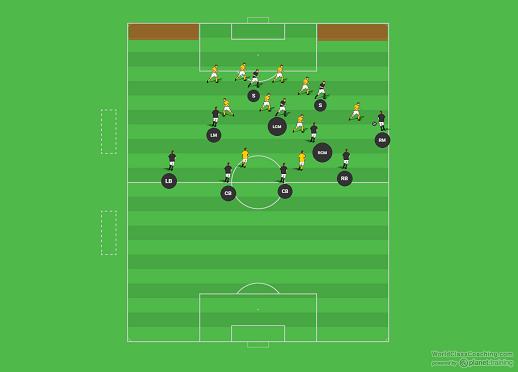
Below, the ball has gone in, but the defending team has recovered. The red triangles show the playing options for the two defending forwards and the defending team essentially has a 10 v 3, heading into a 4 v 2, right up the middle if they can come away clean with the service. While I did not include the keeper in the diagram, obviously any cross intercepted by the keeper could be played out quickly as well.
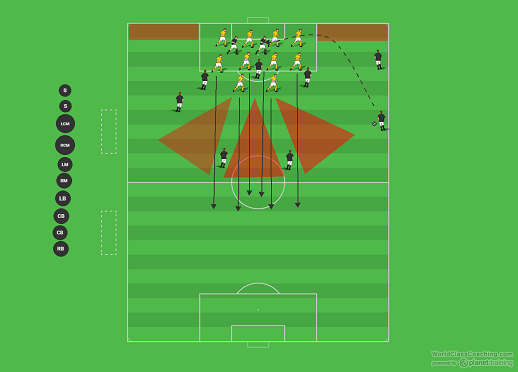
The answer is to attack the end line. As the red areas show, using the space on the end line ( byline ) brings the defenders out farther, a bit deeper and creates several defending problems for them. In this set up, the goal is to send a ball to the PK spot for a delayed run and finish from the top of the box. The defense always has the option to allow crosses or near post shots ( and most likely corner kicks). IF the defenders slide out to defend the cross while also marking a deep near post run, the PK spot will be wide open. A far post run and far side support from the left mid and left back should hold those defenders wide. Again, if they do not mark these players, the cross in can be finished there. When compared to the diagram above, should the defending team come away clean with an mis played balls, the only obvious counter attacking angle is to the far side into a 5 v 6 disadvantage at best- not really a counter at all.
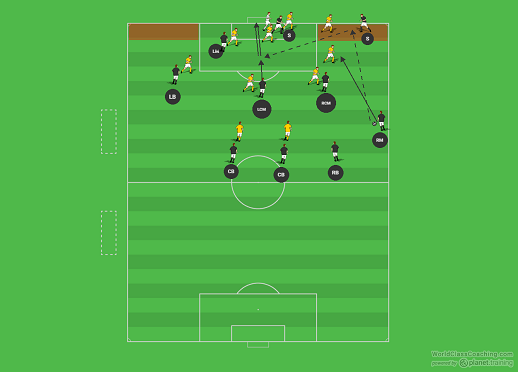
Try these drills if you think the attacking the end line concept can help your team.
Set Up
Place 3 cones at the top of the attacking third as shown. 4 players attack the keeper, who must stay inside the goalie box. Play starts with a player on a central cone dropping the ball out and back to another player who sends the ball up the line to a player running to receive it.
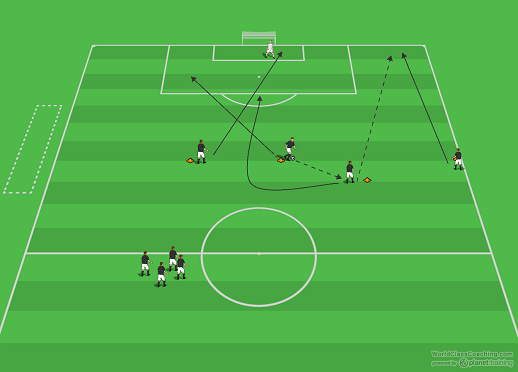
The attacking players all stagger their runs ( as shown above ) to arrive in position as the wide player with the ball is attacking the end line. The goal is to attract the keepers attention with a hard charging near post run but drop the ball back to the PK spot for an easy finish. One wide player holds to clean up anything which gets past the target player at the penalty mark ( diagram below ).
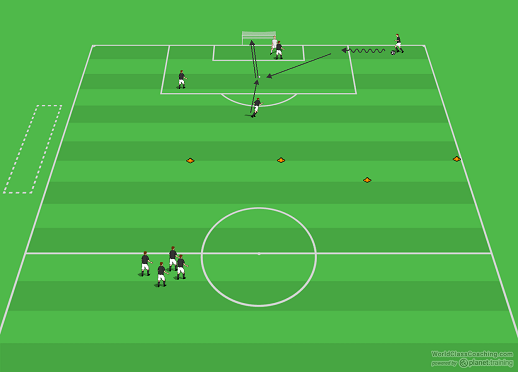
Once the players have perfected this pattern, an additional attacker is added to the line ( shown below ) while 4 defenders ( two at the corners of the goalie box and two at the central cones ) are added to apply pressure. To start, the wide player on the end line can not be challenged until they have gained possession of the ball however as the drill progresses, the coach can allow this to become a 50/50 situation once the attacker and defender are an equal distance away.
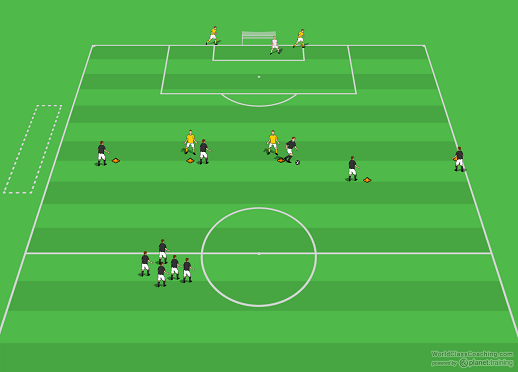
Coaching Points
The focus is not turning the ball over and getting countered. Because of this, the coach should focus on the pass to the end line. It should be hit so the running attacker either gets it, or it goes out of bounds. In the progression, if the defender wins the ball, the on running attacker should be there to apply immediate pressure and force a kick out. Do NOT leave this pass short. If it goes out, fine, get back and play defense and take comfort in the fact the opponent has to stop a minute for a goal kick instead of quickly countering.
By Mike Smith
Currently the Head Coach for University Heights Academy Boys Soccer in Hopkinsville, KY , Mike is in his 14th year as a high school head coach with 23 years coaching experience overall and 34 year as a student and fan of the game. He holds a USSF D License.


